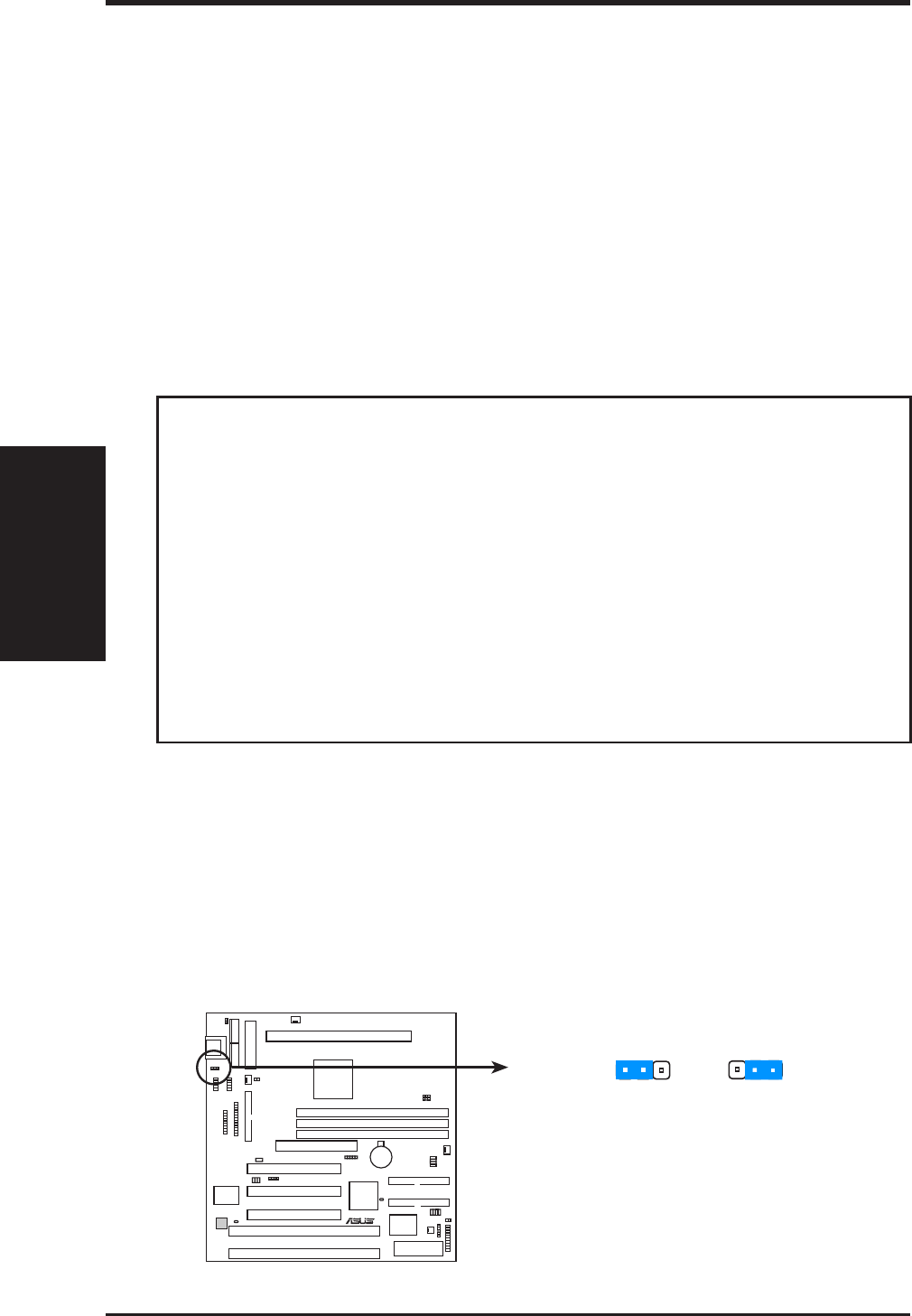
14 ASUS P2-99B User’s Manual
III. HARDWARE SETUP
Motherboard Settings
III. H/W SETUP
Hardware Setup Steps
Before using your computer, you must complete the following steps:
1. Check Motherboard Settings
2. Install Memory Modules
3. Install the Central Processing Unit (CPU)
4. Install Expansion Cards
5. Connect Ribbon Cables, Panel Wires, and Power Supply
6. Setup the BIOS Software
1. Motherboard Settings
This section explains in detail how to change your motherboard’s function settings
through the use of switches and/or jumpers.
WARNING! Computer motherboards and expansion cards contain very delicate
Integrated Circuit (IC) chips. To protect them against damage from static electric-
ity, you should follow some precautions whenever you work on your computer.
1. Unplug your computer when working on the inside.
2. Use a grounded wrist strap before handling computer components. If you do
not have one, touch both of your hands to a safely grounded object or to a
metal object, such as the power supply case.
3. Hold components by the edges and try not to touch the IC chips, leads or
connectors, or other components.
4. Place components on a grounded antistatic pad or on the bag that came with
the component whenever the components are separated from the system.
Jumpers
1. Keyboard Power Up (KBPWR)
This allows you to disable or enable the keyboard power up function. Set to
Enable if you want to use your keyboard (by pressing <Spacebar> or any key,
depending on your motherboard) to power up your computer. This feature re-
quires an ATX power supply that can supply at least 300mA on the +5VSB lead.
The default is set to Disable because not all computers have the appropriate
ATX power supply. Your computer will not function if you set this to Enable
and if you do not have the appropriate ATX power supply.
P2-99B Keyboard Power Up
Disable
(Default)
KBPWR
Enable
123123
R
P2-99B
